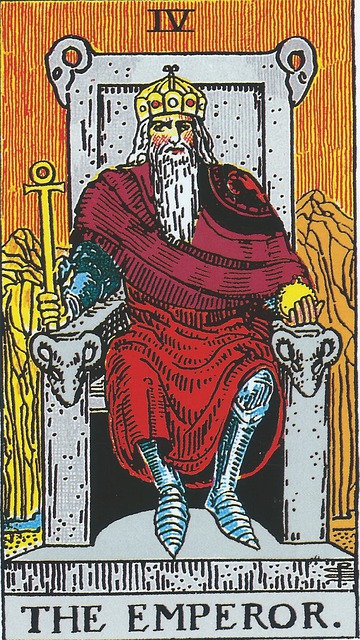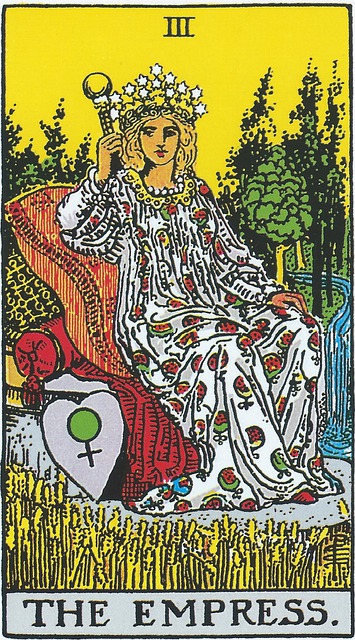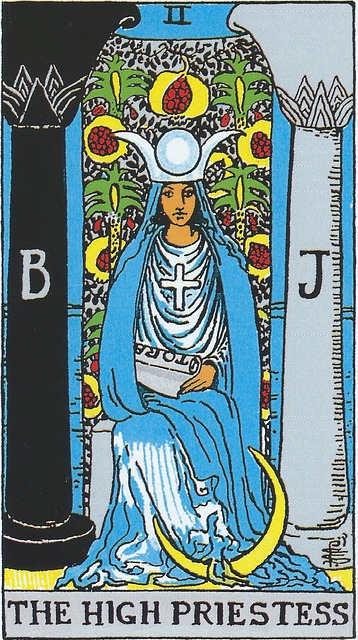
Overview of The Hierophant
The Hierophant of the tarot is a priest, a guardian of higher knowledge, here to encourage us to understand the foundations of traditional religion before we can discover our own belief systems. He is the great bridge builder, interpreting divine guidance for us mere mortals. He is the pastor, the teacher, the light in the dark that guides us on our path.
Alternative names for The Hierophant in varying decks are: The High Priest, The Pope, The Shaman, The Sage. The term Hierophant, is taken from the Greek Hiero – meaning “sacred,” and Phainein “to show”
We are not human beings having a spiritual experience. We are spiritual beings having a human experience.
– Pierre Teilhard de Chardin
Common Meanings
The Hierophant shows up to remind us of tradition – not only religious, but also in life. He is the opposite of change; the harbinger of values and beliefs that have stood the test of time. This is not the time for flamboyant individualism, but rather, to conform, to turn to your spiritual leaders and traditions. He reminds you of the value and rewards received by adhering to these practices. In work he is here to remind you that it is not time to break away, but to respect hierarchy and to conform to the standard in your organization. In love, The Hierophant applauds conventional relationships such as marriage. He is here to remind you on every level of how much there is to gain by examining and understanding the legacy of tradition in human religion and culture.
The Many Faces of The Hierophant
While the upright Hierophant indicates a mentor or teacher and adherence to customs, the shadow side – or reversal – of the Hierophant can show up to indicate that you are coming up against a tradition that feels dogmatic, and it encourages you to seek for the truth for yourself, while also reminding you why it is important to understand the foundation from which the traditions are built before branching out on your own path. The shadow side can represent someone in a position of authority who values obedience over enlightenment. It can also indicate that you are stuck in your own tradition (rut?) that is no longer serving you and that it might be time to forge a new path. Just because it’s always been done that way, doesn’t mean its always right.
The Journey of The Hierophant
The Hierophant, as the earthly representative of God on earth, forms a triad with the two acolytes in the card. As part of the first septenary, The Hierophant is a bridge; an attempt, not to mediate between opposing poles of life, but to simply find and maintain balance on the journey (or the fool’s journey) through the first septenary of the Major Arcana – that of the development of self/ego/consciousness.
Description
A priest- or holy man- sits on a throne. Next to him are two pillars, his right hand is raised in religious blessing, and his left holds a scepter with three crosses. He wears red robes which have three crosses on the front and is wearing a three-tiered crown. At his feet are students, learning the wisdom which only he can teach; one is clad in roses, the other, lilies. Beneath his feet are crossed keys
Themes of The Hierophant
- Sacred Knowledge
- Spiritual Principles & Discipline
- Initiation into secret doctrine
- Teacher or Mentor
- Established Religious Traditions
- Commitment to a divine practice
The Number Five
The number 5 is a holy number in many of earths religions: – in Christianity, the 5 holy wounds of Christ; Hinduism – The five elements; Islam – the Five Pillars of Islam. In numerology 5 is the card of curiosity of the spiritual nature.
Elements of the Card and Associated Symbolism
- Three layered papal crown – the holy trinity
- Right hand raised in religious blessing – two fingers pointing to the heavens, and two to earth.
- Crossed keys- unlocking mysteries which only the Initiated may teach
- Red robes with three crosses, red = earth, crosses
- Staff with triple cross – hoy trinity of father, son, holy spirit; or earth, heaven, spirit-world; conscious, subconscious, super conscious; mind, body, spirit
- Monks or acolytes kneeling to learn – one in roses (love), the other lilies (purity)
Herbs for The Hierophant
- Sage – wisdom; resolving spiritual issues
- Frankincense – link to the divine; grounding, calming; used in spiritual practices for thousands of years
- Myrhh – Restorative; purification; also used in spiritual practices for thousands of years
- Tulsi – (also known as holy basil) – nurtures the spirit; calming; brings balance to spiritual practice.Violet – enhances prophetic dreaming
Questions that The Hierophant asks us
- Have you been balking at the idea of joining a practice (even though it fascinates you) because you didn’t want to adhere to its traditions? If so, what purpose do you think these traditions serves, and is there a good reason for their existence?
- Have you felt like you have been beating your head against an immovable wall of dogma, and if so, why haven’t you taken that leap of faith to step outside of the boundaries of what is accepted by the norm?
That is The Hierophant, a bridge demonstrating the importance of understanding why foundational traditions – particularly spiritual ones – Are in place. Wishing you a week in which you consider committing to a spiritual practice, whether it be meditation, yoga, or a return to a spiritual home. Please leave comments or ask questions.
Please join me next week for: The Lovers!



Recent Comments